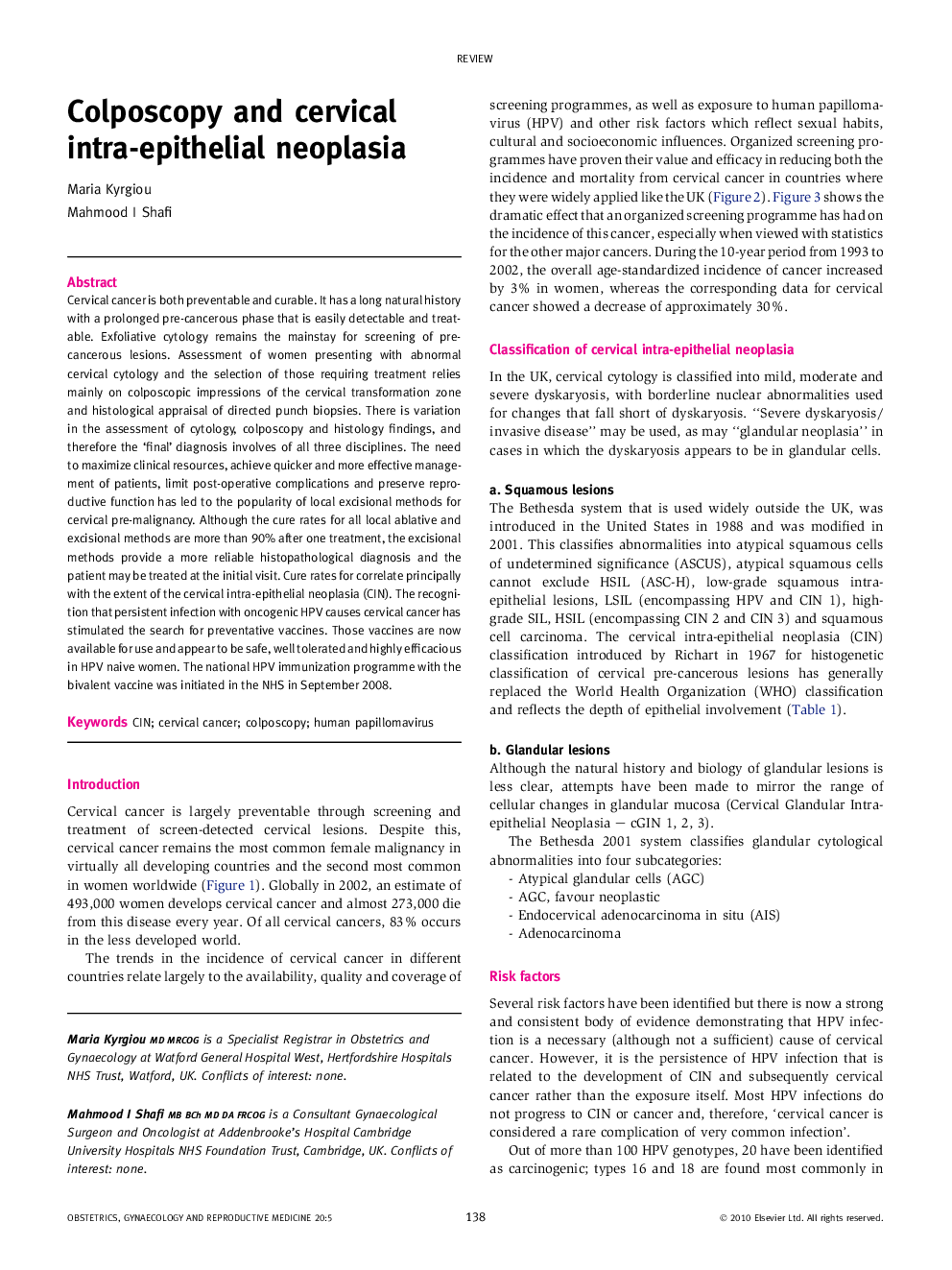| Article ID | Journal | Published Year | Pages | File Type |
|---|---|---|---|---|
| 3967100 | Obstetrics, Gynaecology & Reproductive Medicine | 2010 | 9 Pages |
Cervical cancer is both preventable and curable. It has a long natural history with a prolonged pre-cancerous phase that is easily detectable and treatable. Exfoliative cytology remains the mainstay for screening of pre-cancerous lesions. Assessment of women presenting with abnormal cervical cytology and the selection of those requiring treatment relies mainly on colposcopic impressions of the cervical transformation zone and histological appraisal of directed punch biopsies. There is variation in the assessment of cytology, colposcopy and histology findings, and therefore the ‘final’ diagnosis involves of all three disciplines. The need to maximize clinical resources, achieve quicker and more effective management of patients, limit post-operative complications and preserve reproductive function has led to the popularity of local excisional methods for cervical pre-malignancy. Although the cure rates for all local ablative and excisional methods are more than 90% after one treatment, the excisional methods provide a more reliable histopathological diagnosis and the patient may be treated at the initial visit. Cure rates for correlate principally with the extent of the cervical intra-epithelial neoplasia (CIN). The recognition that persistent infection with oncogenic HPV causes cervical cancer has stimulated the search for preventative vaccines. Those vaccines are now available for use and appear to be safe, well tolerated and highly efficacious in HPV naive women. The national HPV immunization programme with the bivalent vaccine was initiated in the NHS in September 2008.
